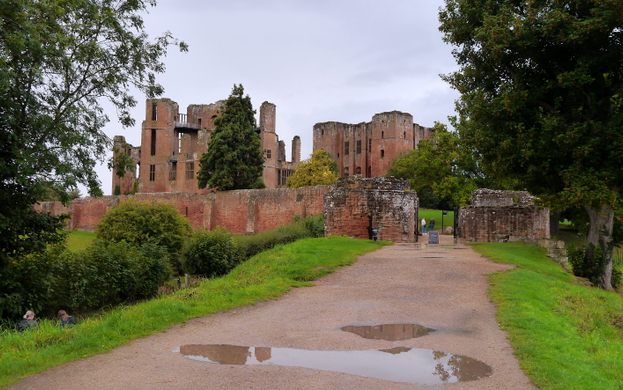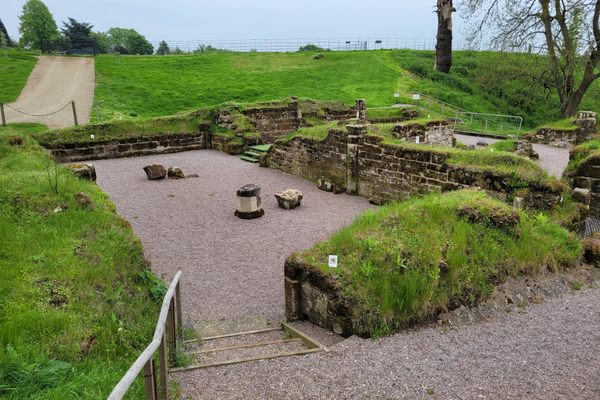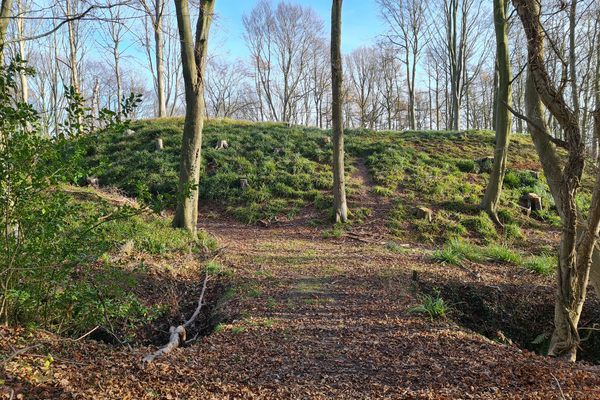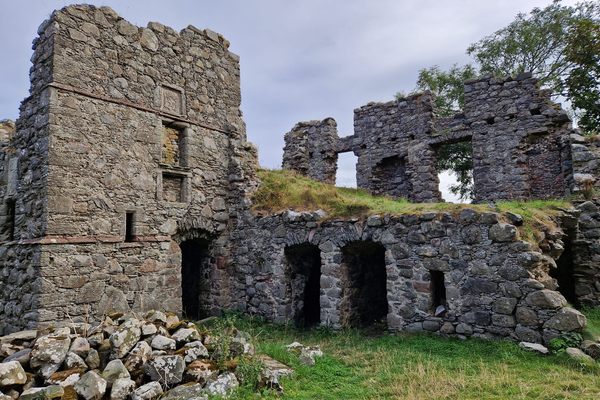Kenilworth Castle
This ruined medieval castle was the scene of Lord Robert Dudley’s seductive reception for Queen Elizabeth I.
In 1563, Queen Elizabeth of England gave Kenilworth Castle to her favorite courtier, Robert Dudley. Elizabeth had known Dudley from childhood, and the day after becoming queen, she nominated him as her Master of the Horses. Not only a prestigious role, this also meant he had to be by her side wherever she travelled. The news of the queen’s devotion to Dudley spread fast all over Europe: “she is in love with Lord Robert and never lets him leave her.”
Though Elizabeth was still young, she was under pressure to marry. Her relationship with Dudley was politically undesirable and, crucially, Dudley was already married. At the time, gossip went around that Dudley was planning to poison his wife so he could marry the queen. And one evening his wife was found lying dead at the foot of the stairs with her neck broken. Although the resulting inquest returned a verdict of accidental death, the sudden death of his wife sparked rumors of murder and brought on an additional obstacle in the way of their marriage.
At Kenilworth Castle, Dudley received Elizabeth and her entourage on a number of her annual royal “progresses.” On her last visit in 1575, the entertainment at Kenilworth took spectacle to its limit. The festivities included staged skirmishes or mock battles on ground and water, tilting in which opponents on horseback charged each other with lances, and bear-baiting. And all this was complemented with culinary extravagance, dancing, various performances, fireworks and ceremonial gunfire. Elizabeth and Dudley also shared a passion for hunting, and on many occasions rode out together in the ancient forests at Kenilworth.
Many of the performances witnessed by the queen were thinly veiled declarations of Dudley’s devotion to her and pleas for her to marry. In the most explicit of the planned performances, the goddess Diana (representing chastity) and Iris (representing marriage), were to argue over who should claim the nymph “Zabeta” (a shortening of Elizabeth). It was to end with a direct appeal to the queen: “How necessarie were for worthy Queenes to wed.” However on the day the play was never performed and bad weather was blamed for it. It is more likely that Elizabeth herself thought Dudley was going too far, and banned the performance.
Although the marriage never happened, the two remained close throughout their lives. Her affection for Dudley may even have been an emotional barrier to her marrying anyone else. Eventually the queen become known as the virgin queen, wedded only to the country.
There is an intriguing portrait of Queen Elizabeth, displayed in Leicester’s Gatehouse at the castle, which has been left in an unrestored state in order to reveal its hidden history. Paint losses from the surface revealed that the queen was painted over the features of another woman. It has also been discovered that the queen was originally depicted holding a serpent. Serpents could symbolize wisdom and prudence, but could also refer to the original sin. Perhaps because of this double meaning, the serpent was painted over by a bunch of roses.






















Follow us on Twitter to get the latest on the world's hidden wonders.
Like us on Facebook to get the latest on the world's hidden wonders.
Follow us on Twitter Like us on Facebook